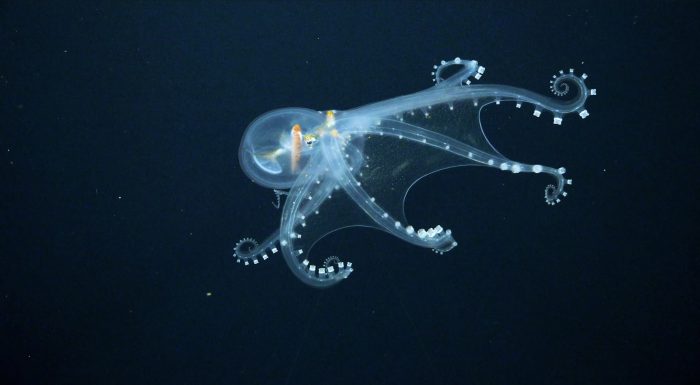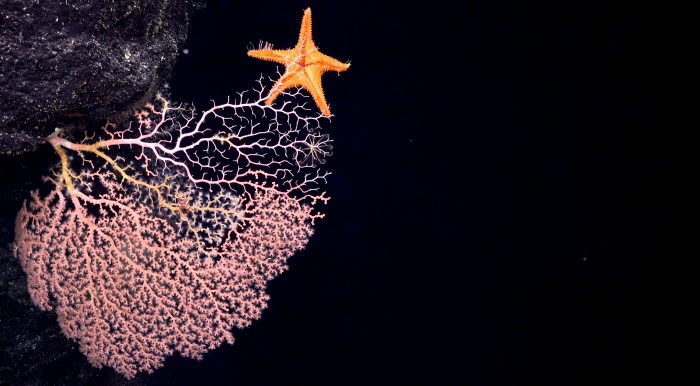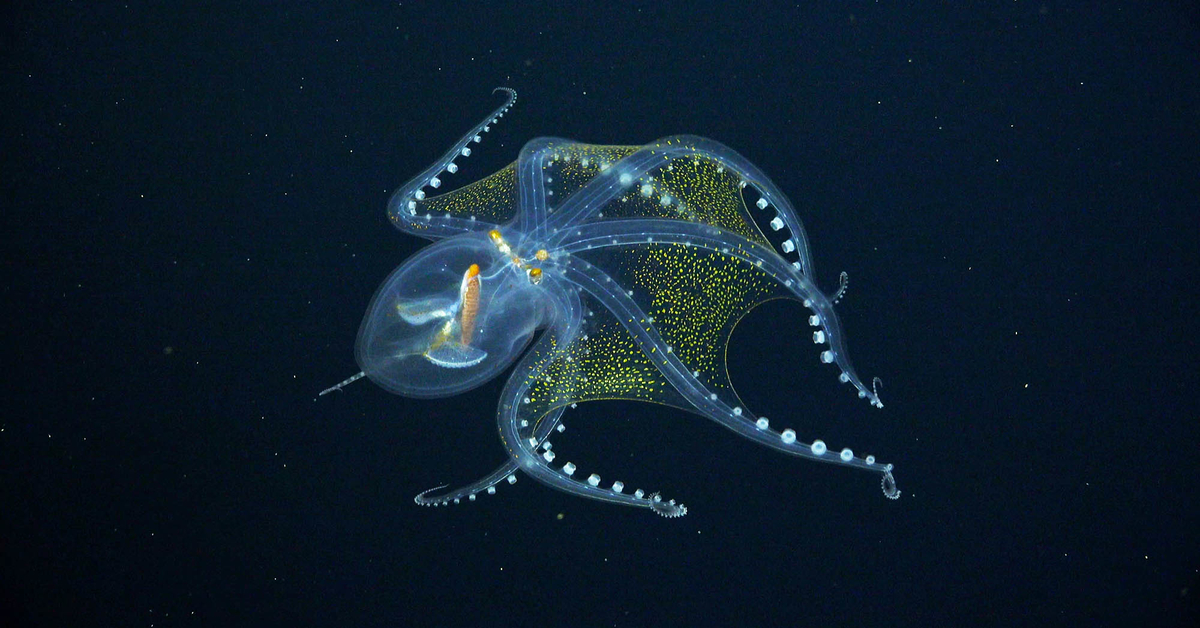Humankind has captured a highly focused image of the M87 supermassive black hole, successfully landed multiple rovers on Mars and sent spacecraft on a voyage beyond our solar system.
But as ironic as it may seem, one of the last unknown frontiers — and one of the most deceivingly familiar — is right here on our planet.
More than 80% of the ocean remains unexplored (crazy, isn’t it?). And when researchers take a deep dive into these mysterious waters, more often than not unusual creatures would surface.
The Schmidt Ocean Institute has been carrying out a deep-sea expedition in the Pacific Ocean, close to the remote Phoenix Islands Archipelago, east of Kiribati. The institute’s ocean explorations are routinely full of surprises, such as discovering coral reefs taller than the Petronas Twin Towers, and their recent 34-day expedition that ended in July was no exception.

Marine scientists lowering the ROV, SuBastian, from their research vessel, Falkor. Photo credits: Schmidt Ocean Institute
Throughout their expedition, marine scientists aboard the institute’s research vessel, Falkor, conducted high-resolution seafloor mapping of more than 30,000 square kilometres and video exploration of five additional seamounts (underwater mountains or volcanoes).
“It has been very inspiring to help document the biodiversity of unexplored seamounts on the high seas and in US waters,” said the expedition Chief Scientist Dr Randi Rotjan of Boston University. “We’re at the beginning of the UN Decade of Ocean Science for Sustainable Development, so now is the time to think about conservation broadly across all oceanscapes, and the maps, footage, and data we have collected will hopefully help to inform policy and management in decision making around new high seas protected areas.”

Another glass octopus was observed by SuBastian. Photo credits: Schmidt Ocean Institute
The scientists deployed a remotely operated vehicle (ROV), affectionately known as SuBastian, to do the deepwater exploration on their behalf. And they got really lucky indeed. They made not one but two extremely rare sightings of a glass octopus, Vitreledonella richardi, a virtually see-through species whose only visible features are its optic nerve, eyeballs and digestive tract. That’s both spooky and fascinating at the same time!
Before their close-up observations of the octopus, scientists were only able to learn about the animal by analysing specimens found in the guts of predators. Rather than camouflaging like most of their cousins, this elusive octopus chose to make itself almost invisible as an alternative approach to hide from potential predators and probably from prey as well. Evolution really is something wonderful. Check out this GIF of the spectacular creature!
The underwater robot also managed to capture footage of a rare whale shark for the first time. A deep-water species that has a history of millions of years, the whale shark got its name from its length of more than 12 metres (40 feet). A myriad of interesting and unique marine behaviours was also uncovered throughout the expedition, including crabs stealing fish from one another. Cute eh?

Scientists spot a clear example of corallivory: a predator eating coral mucus, tissue or skeleton of a coral. Here a corallivorous deep-sea starfish eats live coral at a depth of 2004 metres on a previously unexplored seamount. Photo credit: Schmidt Ocean Institute.
Aboard Falkor, the research team also successfully concluded the first comprehensive survey of coral and sponge predation to study how corals react to grazing scars and wounding by exposing them to over 15 different microbial stimuli.
They acquired the largest deep-water microbial culture collection from the Central Pacific Ocean, and the findings from these novel experiments are potentially life-changing. The scientists will be equipped with new knowledge to define the origins of adaptive immunity in larger organisms, which may reveal new insights to accelerate medical research in cancer immunotherapies, drug delivery and enhanced vaccine efficacy.
“The Ocean holds wonders and promises we haven’t imagined, much less discovered,” said Wendy Schmidt, co-founder of the institute. “Expeditions like these teach us why we need to increase our efforts to restore and better understand marine ecosystems everywhere – because the great chain of life that begins in the ocean is critical for human health and wellbeing,”
If you’re interested in viewing more photos and videos from the expedition, or if you’d just like to save a high-resolution image as your wallpaper, here’s a link from the institute containing more photos and videos. Plenty of captivating underwater footage can be seen on their YouTube channel too. For you engineering geeks, check out the specifications and science systems of the research vessel and ROV here!






























